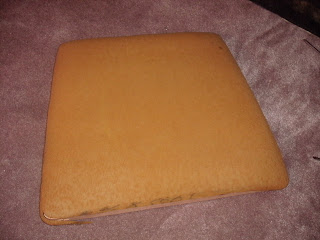As I started pondering how I was going to make over our entry powder room, one of the biggest dilemmas was determining what I would do with the window. We have a beautiful round window in that room, but with the bathroom being on the ground floor it obviously has to have some type of covering. The current covering was nice… in its day, but had long since become dated. (Unfortunately I don’t have any “before” pictures.) Originally I had taken a loooong piece of fabric and made a pocket (much like one on a standard curtain) to gather on a rod. The “rod” was a large quilting hoop which was just the right size. I had then gathered it together in the center of the hoop and secured with a rubber band. It looked like a pretty flower in the center – but I was pretty sick of it. So, the question was… “How can I switch it up and give it a whole look?” I needed something new and sleek. I spent days searching the internet, but alas I found no suggestions. Of course I could spend tons of money and “buy” something, but that just wouldn’t do. I determined that I was on my own to try and come up with a new idea. I wanted a window covering that looked like “slats” or a window blind. (The one reason I wanted "slats" is because I DID want to be able to peak through the window covering to see outside if I needed to. If it had all been one piece I could not do that.) After one failed less than desirable attempt, I gave it another shot, and this is what I came up with.
First I went and purchased a brand new 24” quilter’s hoop. This was found a JoAnn Fabrics for about $6.00. I used the inside portion of the hoop so I had one solid hoop – reserving the outer hoop for later in the project.

From my first attempt I learned that it was very easy to pull the hoop “out of round”, so I figured I better reinforce it somehow. This was done by taking two strips of fabric – slightly larger than the hoop, and stapling them to the back of the hoop. I measured carefully to make sure that once attached the hoop kept the same dimension all the way around.

Next I purchased a yard of fabric that I wanted to use. On my first go-round I had tried a sheer fabric. That did not really work out, so this time I selected something with a little more body to it.
I determined how wide I wanted my “slats” to be, including the amount for the overlap. I decided that 7” would be just about right. I measured off my fabric every 7” – the cut strips the width of the fabric.



I ironed each strip down the center so I had a nice crisp edge. Since the fabric did not really fray, and I knew I wasn't going to be messing with it much, I decided I did NOT need to finish the edges. (Don'tcha love that kind of a project!!!???)

Although it’s a little hard to see, I laid the strips across the hoop at the approximate distance apart until I had enough strips to cover the hoop.

Once that was done it was time to start assembly. I found the center of my hoop and measured down an equal distance on each side - making sure that my first "slat" would be straight. The first strip is the most difficult because you need to secure it without any puckers. You want it completely flat. I stapled that in place on each side and along the top.

For each remaining piece I measured down the same distance on each side and secured it with a couple of staples. I continued this process until all the pieces were secure. You want to pull each piece taunt without pulling the hoop out of round.
I then took the other part of the hoop assembly. (The one with the screw to tighten it.) I placed that hoop over my hoop with the fabric. I tightened the screw and pulled all the strips to make sure they were tight and straight in the frame. The dilemma came when I realized that I now had a metal screw and plate sticking up - obviously would not fit in the window that way. The solution to that problem was to staple the whole thing together. I went around the outside if the frame and placed staples so it would hold the two hoops together, then it was easy to remove the screw and metal plate.
With that done I was able to cut off the remaining fabric even with the back of the hoop. I tried to make this as neat as possible so it did not look bad on the back side - after all, this would be seen from the outside.
The final step was to hot glue a contrasting cording around the entire edge to finish it off. This way none of the wood hoop shows.
I held my breath as I took it into the bathroom for installation. It was a VERY TIGHT fit, but I was able to get it into the window. I stepped back and admired my handywork. I LOVED it. It was exactly what I had been looking for. It gave just the right look for my newly re-decorated bathroom.


If you have a round window maybe you can think about using this type of covering. Everyone has loved it - I hope you do too!!!


































